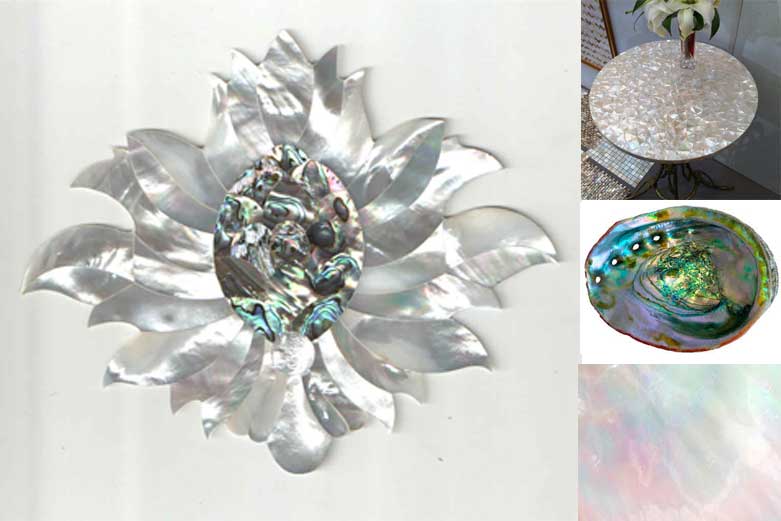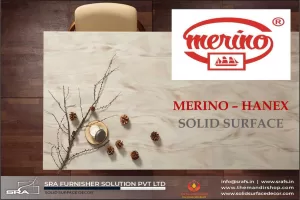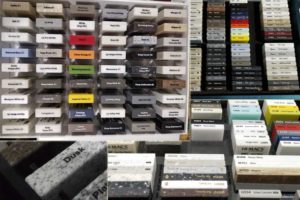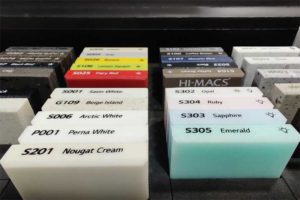What is mother of pearl?
Mother of pearl is an organic-inorganic composite material produced by some mollusks as an inner shell layer. It is also the material of which pearls are composed. It is strong, resilient, and iridescent. The iridescence is caused by the way light reflects on the layers of nacre on the shell.
Mother of pearl is most commonly found in three types of mollusks: pearl oysters, freshwater mussels, and abalone. To protect the inside of their shells from parasites and foreign irritants, the mollusk coats it with nacre. The thickness of the nacre layer can vary, but it is typically between 0.01 and 0.03 millimeters thick.
Mother of pearl has been used for centuries in a variety of applications, including jewelry, buttons, inlays, and decorative items. It is also used in some musical instruments, such as guitars and flutes.
Here are some of the special properties of mother of pearl:
- It is strong and resilient.
- It is iridescent, meaning it has a rainbow-like sheen.
- It is smooth and polished.
- It is available in a variety of colors, including white, pink, blue, and green.
Mother of pearl is a beautiful and versatile material that has been used for centuries in a variety of applications. It is a sustainable material that can be harvested without harming the mollusks that produce it.
Here are some of the reasons why mother of pearl is called “mother of pearl”:
- It resembles pearls.
- It can be polished to a beautiful luster.
- It is the inner layer of the shell, which is where pearls are formed.
What is mother of pearl?, What is MOP? Nacre? Mother of Pearl is the name commonly used to refer to the nacre that coats a pearl. It’s a mixture of minerals secreted by oysters that actually forms the gem. Mother of pearl? is the iridescent inside lining of a mollusk shell. It is most commonly found in three types of mollusks—pearl oysters, freshwater mussels, and abalone. To protect the inside of their shells from parasites and foreign irritants, the mollusk coats it with nacre—an organic substance that gives mother-of-pearl its iridescent effect and distinct beauty. This multicolored iridescence is caused by the way light reflects on the layers of nacre on the shell.
The History of Mother of Pearl
In previous centuries, some cultures placed great importance on mother of pearl, sometimes more than pearls themselves. In ancient Egypt, mother of pearl was used to embellish silver pieces. Mother of pearl was also immensely popular in China during the Shang and Ming Dynasties. Finally, in the Americas, Native American tribes regularly traded mother of pearl and used it to create beads and jewelry.
Mother of Pearl Furniture
SRA is well known in the market for the manufacturing of high quality decorative furniture and we supply to products to our clients all over the globe. The MOP on Woodswe offer to the clients have a very innovative and a unique design on them and they are high on demand in the market due to their exquisite look. These products have a very attractive look and they enhance the interior of the house when they are used for the purpose of decoration. We offer these products to the clients at very reasonable rates.
Structure and appearance
Nacre is composed of hexagonal platelets of aragonite (a form of calcium carbonate) 10–20 µm wide and 0.5 µm thick arranged in a continuous parallel lamina.[2] Depending on the species, the shape of the tablets differ; in Pinna, the tablets are rectangular, with symmetric sectors more or less soluble. Whatever the shape of the tablets, the smallest units they contain are irregular rounded granules. These layers are separated by sheets of organic matrix (interfaces) composed of elastic biopolymers (such as chitin, lustrin and silk-like proteins). This mixture of brittle platelets and the thin layers of elastic biopolymers makes the material strong and resilient, with a Young’s modulus of 70 GPa (when dry). Strength and resilience are also likely to be due to adhesion by the “brickwork” arrangement of the platelets, which inhibits transverse crack propagation. This structure, at multiple length sizes, greatly increases its toughness, making it almost as strong as silicon.
The statistical variation of the platelets has a negative effect on the mechanical performance (stiffness, strength, and energy absorption because statistical variation precipitates localization of deformation . However, the negative effects of statistical variations can be offset by interfaces with large strain at failure accompanied by strain hardening . On the other hand, the fracture toughness of nacre increases with moderate statistical variations which creates tough regions where the crack gets pinned. But, higher statistical variations generates very weak regions which allows the crack to propagate without much resistance causing the fracture toughness decreases .
Nacre appears iridescent because the thickness of the aragonite platelets is close to the wavelength of visible light. These structures interfere constructively and destructively with different wavelengths of light at different viewing angles, creating structural colours.
The crystallographic c-axis points approximately perpendicular to the shell wall, but the direction of the other axes varies between groups. Adjacent tablets have been shown to have dramatically different c-axis orientation, generally randomly oriented within ~20° of vertical. In bivalves and cephalopods, the b-axis points in the direction of shell growth, whereas in the monoplacophora it is the a-axis that is this way inclined. The interlocking of bricks of nacre has large impact on both the deformation mechanism as well as its toughness. In addition, the mineral–organic interface results in enhanced resilience and strength of the organic interlayers.
But what is the difference between a pearl and mother of pearl?
Iridescent shiny materials are a secretion by a oyster or mollusk on the inside of the shell, this is usually known as nacre or Mother of Pearl. This lining protects the shellfish from abrasions and irritants that can get inside the shell. When a foreign object such as a piece of sand enters the shell, the lining protects the oyster and the nacre begins to build up on the foreign object – as such pearls are formed. The shiny nacre that develops on the inside of the shell and essentially “gives birth” to a pearl by transferring that nacre to the foreign object is the mother of pearl. The pearl is the shaped nacre. Mother of Pearl is shaped like the shell – and so it can cover larger areas such as watch faces, whereas a pearl is usually shaped round and made into beads etc.
What is Nacre?
Nacre, also known as mother-of-pearl, is an organic-inorganic composite material produced by some mollusks as an inner shell layer. It is also the material of which pearls are composed. It is strong, resilient, and iridescent.
Nacre is composed of 95% aragonite (a form of calcium carbonate) and 5% organic material. The aragonite crystals are arranged in a very specific way, which gives nacre its strength and iridescence. The organic material helps to bind the aragonite crystals together and also gives nacre its flexibility.
Nacre is produced by the mantle, a tissue that lines the inside of the mollusk’s shell. When a foreign object enters the shell, the mantle secretes nacre around the object, forming a pearl. The layers of nacre build up over time, creating a beautiful and valuable gem.
Nacre has been used for centuries in a variety of applications, including jewelry, buttons, inlays, and decorative items. It is also used in some musical instruments, such as guitars and flutes.
Here are some of the special properties of nacre:
- It is strong and resilient.
- It is iridescent, meaning it has a rainbow-like sheen.
- It is smooth and polished.
- It is available in a variety of colors, including white, pink, blue, and green.
Nacre is a beautiful and versatile material that has been used for centuries in a variety of applications. It is a sustainable material that can be harvested without harming the mollusks that produce it.
Here are some of the reasons why nacre is called “mother-of-pearl”:
- It resembles pearls.
- It can be polished to a beautiful luster.
- It is the inner layer of the shell, which is where pearls are formed.
Mother-of-pearl is the hard, silvery, internal layer of several kinds of shells, especially oysters, the large varieties of which in the Indian Seas secrete this coat of sufficient thickness to render the shell an object of manufacture. The genus ot shell-fish, Pentadinrz, furnishas the finest pearls as well as mo-ther-ot-pearl: it is found round the coasts of Ceylon, near Ormus, in the Persian Gulf, at Cape Comorin, and in some of the Australian seas. The dealers in pearl- shells consider the Chinese from Manilla to be the best; they are fine, large, and very brilliant, with yellow edges. Fine large shells of a dead white are supplied by Singapore. Common varieties come irom Bombay and Valgraiso, from the latter place with jet black edges. South Sea pearl-shells are common, with white edges. The beautiful dark green pearl-shells called ear-shells or sea-ears, are more concave than the others, and have small holes round the margin; they are the coverings of the Haliotis, which occurs in the Californian, South African, and East Indian Seas. In the Indian collection of the Great Exhibition, specimens of the finest pearl shells were shown, such as the Meleagrina margari-tifera, Haliotis gigas, Haliotis iris, and a large species of Turbo, which shells are known in commerce as flat-shells, green snail-shells, buffalo-shells, Bombay shells. Messrs. Faunt-leroy and Mr. Banks had also some fine collections. The latter gentleman states that the shore of the Sooloo Islands affords the finest shells. The beautiful tints of the mother-of-pearl depend upon its structure; the surface being covered with a multitude of minute grooves, which decompose the reflected light. Sir David Brewster, who was the first to explain these chromatic effects, discovered, on examining the surface of mother-of-pearl with a microscope, ” a groved structure, like the delicate texture of the skin at the top of an infant’s finger, or like the section of the annual growths of wood as seen upon a dressed plank of fir. These may sometimes be seen by the naked eye; but they are often so minute that 3,000 of t-iera are oflataiBed in an inch.” It is remarkable that tBese iridescent hues can be communicated to other surfaces as a seal imparts its impress to wax. The colors may be best seen by taking an impression of the mother-of-pearl in black wax; but ” a solution ofgumarabic or isinglass, when allowed to indurate upon a surface of mother-of-pearl, 4akes a most perfect impression Irom it, and exhibits all the communicable colors in the finest manner, when seen either by reflection or transmission. By placing the isinglass between two finely-polished surfaces of mother-of-pearl, we obtain a film of artificial mother-of-pearl, which, when seen by single lights, such as that of a candle, or by an aperture in the window, will shine with the brightest hues.” It is in consequence of this 1 amellar structure that pearl shells admit of being split into laminae for the handles of knives, for counters, and for inlaying. Splitting, however, is liable to spoil the shell, and is therefore avoided as much as possible. The different parts of the shell are selected as nearly as possible to suit the required purposes, and the excess of thickness is got rid of at the grindstone. In preparing the rough pearl-shell, the square and angular pieces are cut out with the ordinary brass-back saw, and the circular pieces, such as those for buttons, with the annular or crown-saw, fixed upon a lathe-mandrel. The pieces are next ground flat upon a wet grindstone, the edge of which is turned with a number of grooves, the ridges of which are less liable to be clogged than the entire surface, and hence grind more quickly. If the stone be wetted with soap and water it is less liable to be clogged. The pieces are finished on the flat side of the stone, and are then ready for inlaying, engraving, polishing, c. Cylindrical pieces are cut out of the thick part of the shell, near the hinge, and are rounded on the grindstone preparatory to being turned in the lathe. The finishing and polishing are described in the third volume of Mr. Holtzapffel’s excellent work on ” Mechanical Manipulatioa” Counters, . silk-winders, c, are smoothed with Trent wk sand or pumice-stone and water on a bufl wheel or hand-polisher, and are finished with rotten-stone moistened with sulphuric acid, which developes finely the striated structure of the shell. For inlaid works the surface is made flat by filing and scraping ; then pumice stone is used, and after this putty-powder, both on buff-sticks with water; and the final polish is given with rotten stone and sulphuric acid, unless tortoise-shell or some other substance liable to be injuiiously affected by the acid be present in the inlay. In turned works fine emery paper, rotten stone and acid or oil are used. The pearl handles for razors are slightly riveted together in pairs, then scraped, sand-buffed on the wheel with Trent sand and water; thirdly, gloss-buffed on the wheel with rotten stone and oil, or sometimes with dry chalk rubbed on the same wheel; and fourthly, they are handed up, or polished with dry rotten stone.
This article was originally published with the title “Mother of Pearl” in Scientific American 8, 32, 251 (April 1853)
doi:10.1038/scientificamerican04251853-251




